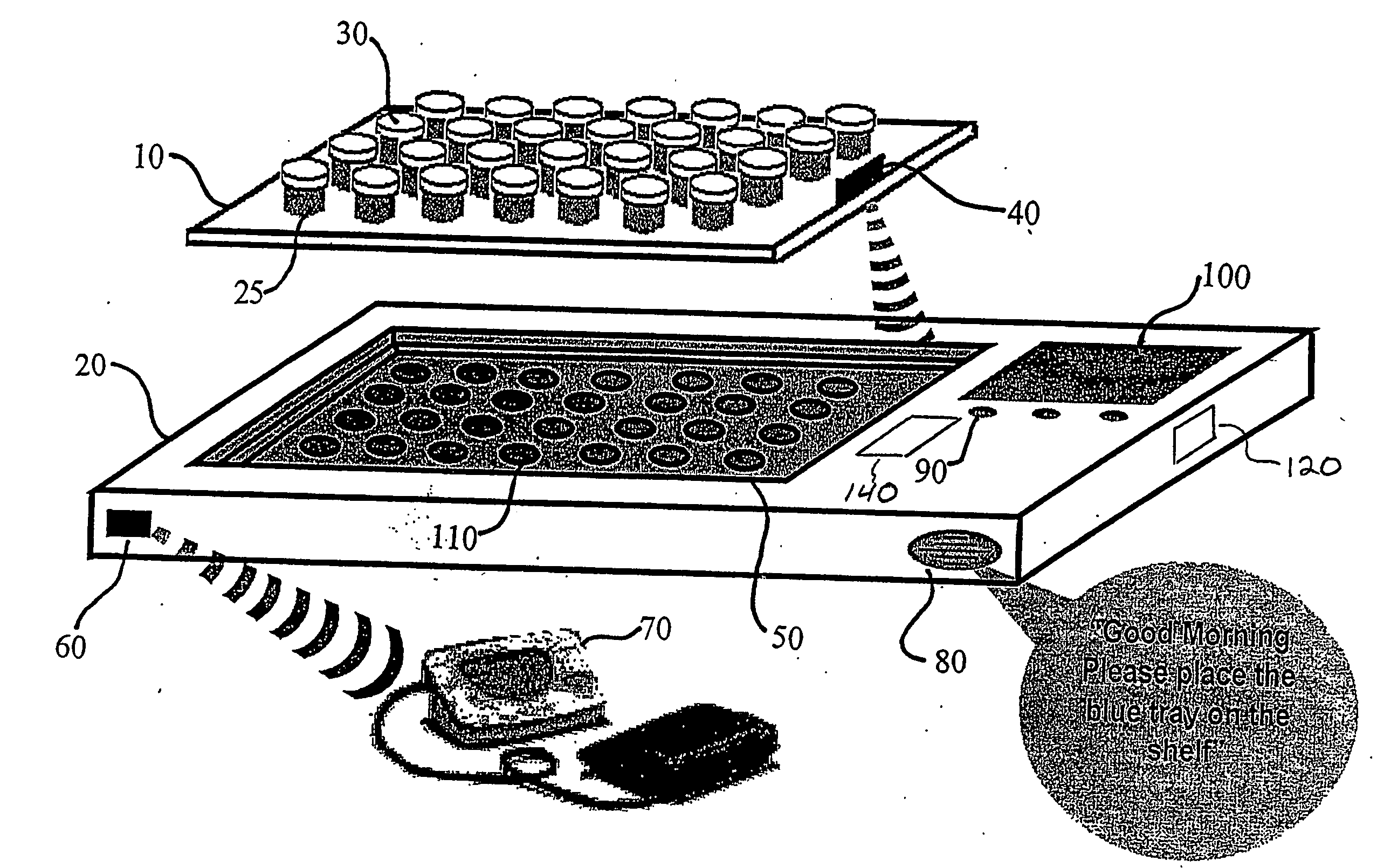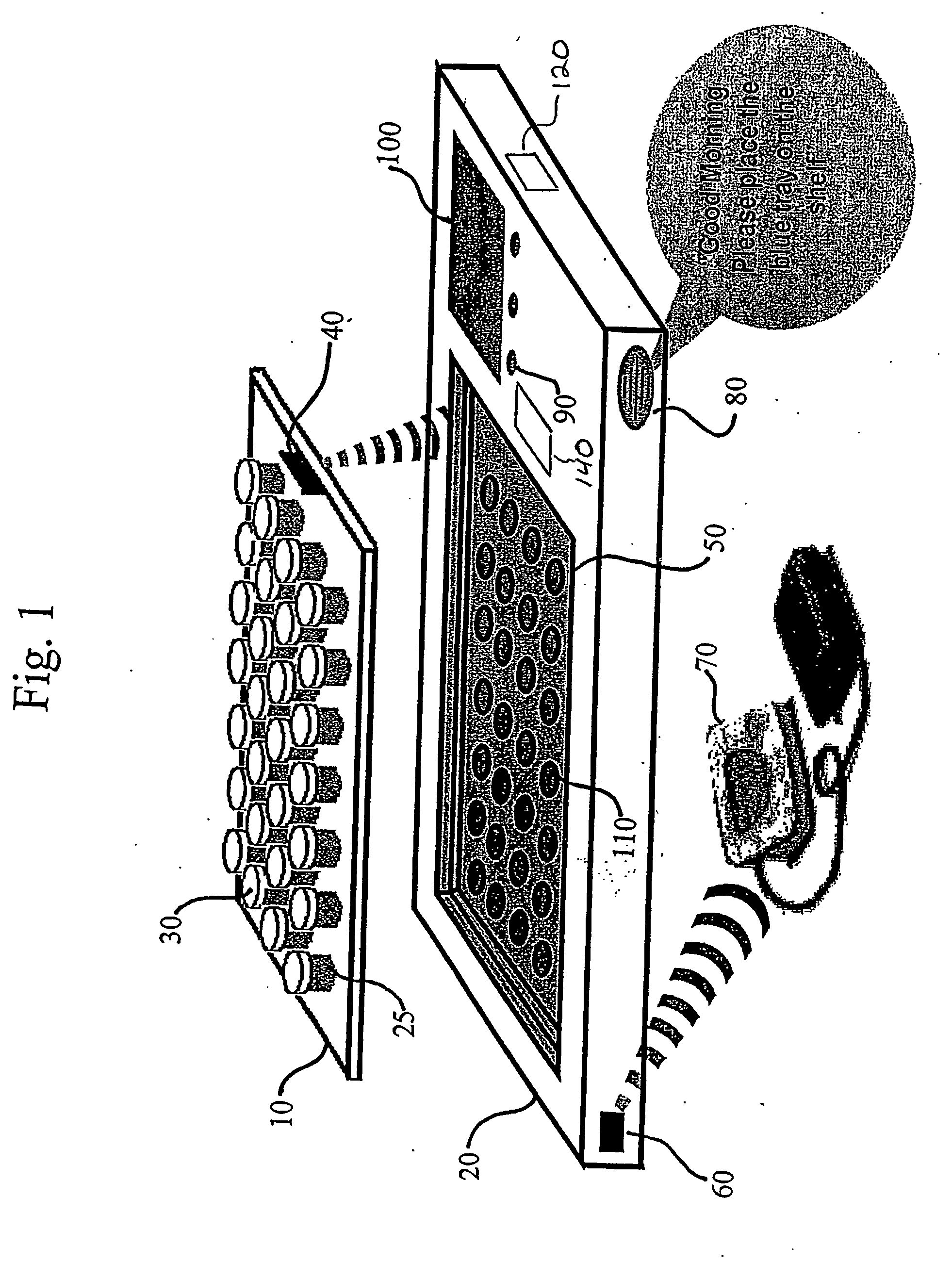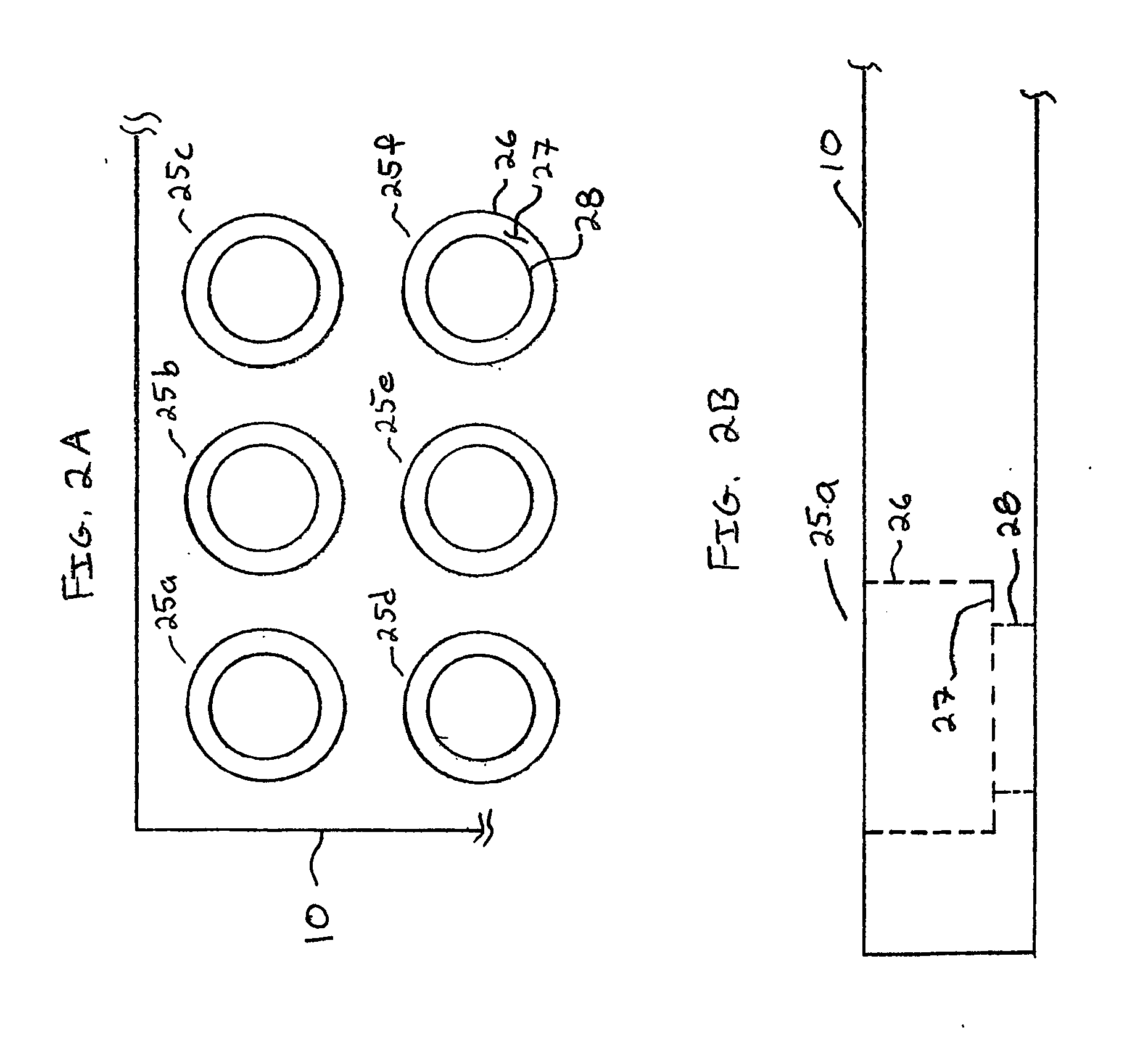Medication adherence system
a medication adherence and system technology, applied in the field of medication adherence system, can solve the problems of increasing the likelihood of medication errors, affecting the adherence of patients with chronic conditions to prescribed therapies, and bringing additional complexity and dynamism to medication regimens
- Summary
- Abstract
- Description
- Claims
- Application Information
AI Technical Summary
Benefits of technology
Problems solved by technology
Method used
Image
Examples
Embodiment Construction
[0020] The various features of the preferred embodiments will now be described with reference to the drawing figures, in which like parts are identified with the same reference characters. The following description of the presently contemplated best mode of practicing the invention is not to be taken in a limiting sense, but is provided merely for the purpose of describing the general principles of the invention.
[0021]FIG. 1 illustrates a medication adherence system comprising a smart medication adherence tray 10 (medication tray 10) and a cooperating docking station 20. The smart medication adherence tray 10 contains individual receptacles 25 for receiving removable medication containers 30. The medication tray 10 also contains a means to store information about the medications on the medication tray 10, and a means to communicate this information to the docking station 20. The means to both store this information and communicate it to the docking station 20 will be henceforth ref...
PUM
 Login to View More
Login to View More Abstract
Description
Claims
Application Information
 Login to View More
Login to View More - R&D
- Intellectual Property
- Life Sciences
- Materials
- Tech Scout
- Unparalleled Data Quality
- Higher Quality Content
- 60% Fewer Hallucinations
Browse by: Latest US Patents, China's latest patents, Technical Efficacy Thesaurus, Application Domain, Technology Topic, Popular Technical Reports.
© 2025 PatSnap. All rights reserved.Legal|Privacy policy|Modern Slavery Act Transparency Statement|Sitemap|About US| Contact US: help@patsnap.com



